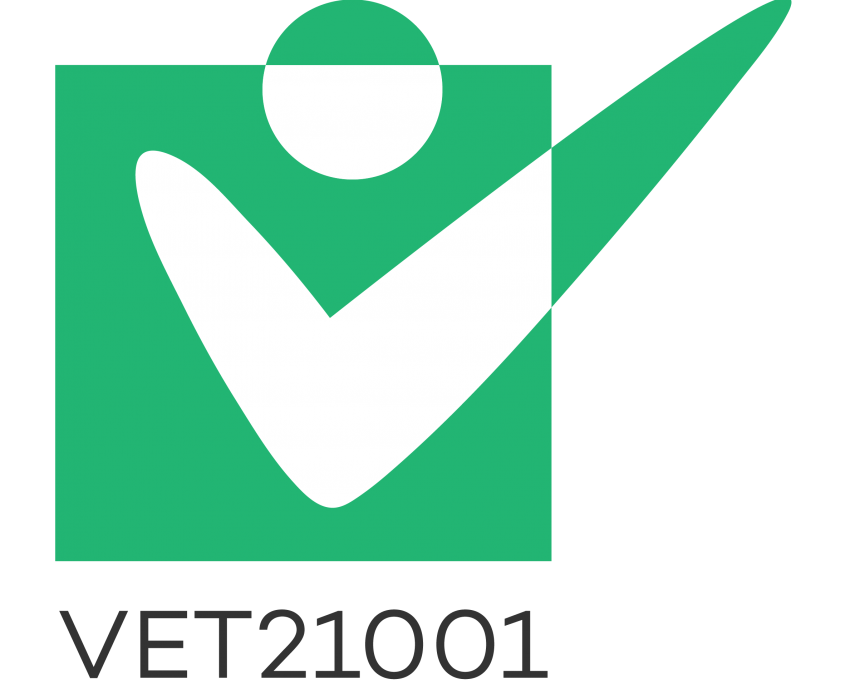Knowledge & Human Resources
Organizational knowledge is what gives an organizations its power, resilience and what distinguishes it from its peers and competitors. While artificial intelligence (AI) doesn’t take over, organizations rely mostly on their human resources as a repository of organizational knowledge. As this is dynamic and changes across time, early identification of competence gaps and capacity building programs to address them is of paramount importance.
Both EQAVET and ISO 21001 recognize this and dedicate several sections to requirements regarding:
- Clear definition and communication of responsibilities and authorities
- Awareness and Involvement of staff in quality management
- Timely identification of competence gaps
- Deployment of capacity building programs through peer-learning, mentoring, training, etc.
Criteria
EQAVET
| 1.4. Responsibilities in quality management and development have been explicitly allocated |
| 1.5. There is an early involvement of staff in planning, including with regard to quality development |
| 2.2 Relevant and inclusive partnerships, including those between teachers and trainers, are explicitly supported to implement the actions planned |
| 2.3 The strategic plan for staff competence development specifies the need for training for teachers and trainers |
| 2.4 Staff undertake regular training and develop cooperation with relevant external stakeholders to support capacity building and quality improvement, and to enhance performance |
ISO 21001
| 5.3 Organizational roles, responsibilities and authorities |
| 6.2.1 |
| 7.1.1.2 |
| 7.1.6 Organizational knowledge |
| 7.2 Competence |
| 7.3 Awareness |
VET21001 Tools
Template for Job Description
Competence applies to any work that directly or indirectly affects organizations’ ability to consistently deliver products and services that meet applicable legal and regulatory requirements and improve customer satisfaction. A job description is used to determine the competences required for each organizational role to achieve a job performance that will ensure expected results in line with the organization’s performance objectives. These competences can be determined for a single group or for groups of similar jobs with each other. Beware because this need is not fixed but can change over time and should therefore be reviewed periodically and not only when a new job position is implemented within the organization (i.e. when there are new job specifications, new operating instructions, new technologies, when plans are made for the adoption of new equipment, when an analysis of nonconformities, customer complaints and other issues dictates that new skills must be sought to improve the situation).
Determining necessary competence entails identifying the required results or outcomes of a job, position, task or role, the criteria or standards of performance to be achieved, the evidence required and the method for achieving them (refer to table for processes). The starting point, then, is to define the outcomes expected from a job in order to define, consistently, what makes those who perform it successful practitioners and to establish the basis for competence assessment and development.
Organizations beginning to work on this could start with a risk-based approach, determining the potential impact on product and service compliance and customer satisfaction of not applying the competence requirements in certain cases. This requires the organization to determine and map the competences needed by the person(s) whose work falls within the scope of the standard and which affects the efficiency and effectiveness of the management system, and to ensure that those individuals are competent by education, training or experience.
Establishing the necessary competencies for all job roles helps focus the minds of managers and employees on what criteria are important for achieving certain performance within a particular job role. This helps significantly during the human resource recruitment and growth processes of the organization, as well as in identifying skills mismatches and professional development opportunities for the staff coherently with individual job roles and organization’s objectives. Where there are mismatches between the competencies needed and those possessed by personnel, action should be taken to enable them to acquire the necessary competencies (see Training plan).
Download this tool in editable format
Download an example of the use of this tool
Template for Planning & Monitoring Training
The template covers the relevant information to achieve the benefits of structured competency management:
i) training needs analysis to identify gaps in individuals’ knowledge and skills with respect to their job role and the changes and outcomes the organization intends to achieve;
ii) planning and scheduling of necessary development and training activities consistent with identified training needs and objectives;
iii) implementation and monitoring of training interventions, including costs, status, duration, training providers, and type and area of training; and
iv) follow-up of each individual’s progress and retention of related documented information.
Download this tool in editable format (Word)
Download this tool in editable format (Excel)
Download examples of the use of this tool:


